Search Result
Results for "
Cattle
" in MedChemExpress (MCE) Product Catalog:
7
Isotope-Labeled Compounds
| Cat. No. |
Product Name |
Target |
Research Areas |
Chemical Structure |
-
- HY-P1156
-
-

-
- HY-P1156A
-
-
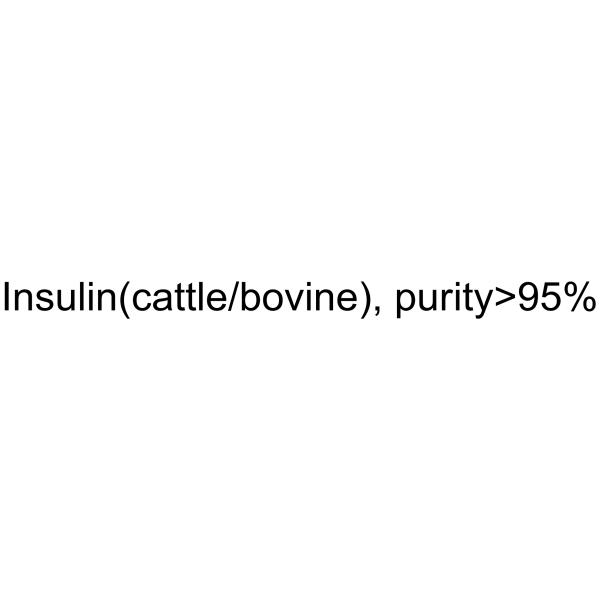
-
- HY-P3965
-
-
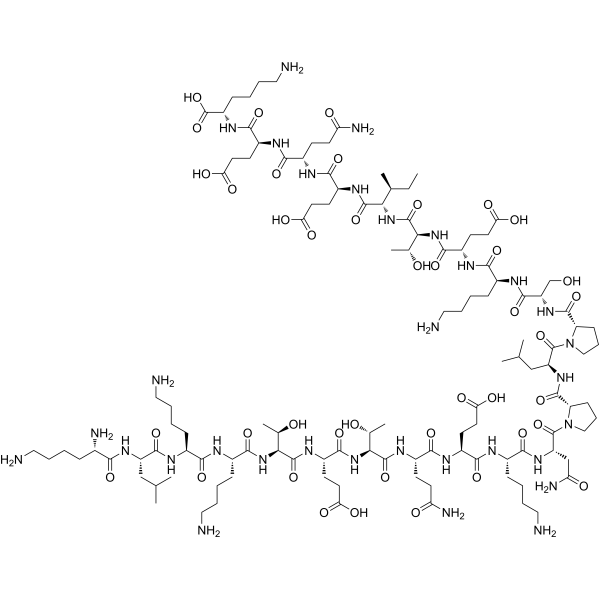
-
- HY-P3843
-
|
|
Mas-related G-protein-coupled Receptor (MRGPR)
Neuropeptide Y Receptor
|
Neurological Disease
|
|
Neuropeptide AF (cattle), an amidated octadecapeptide, is RFamide neuropeptide. Neuropeptide AF (cattle) acts as a ligand of Mas-related gene receptor A4 (MrgprA4) (Mas-related G-protein-coupled Receptor (MRGPR)) (EC50 of ~60 nM) and MrgprC11 (EC50 of ~300 nM). Neuropeptide AF (cattle) also activate to the G protein-coupled receptors NPFF1 (Neuropeptide Y Receptor) (EC50 of ~25-325 nM) and NPFF2 (EC50 of ~1-5 nM). Neuropeptide AF (cattle) shows anti-opiate and related pain modulation effects .
|
-

-
- HY-P3965A
-
-
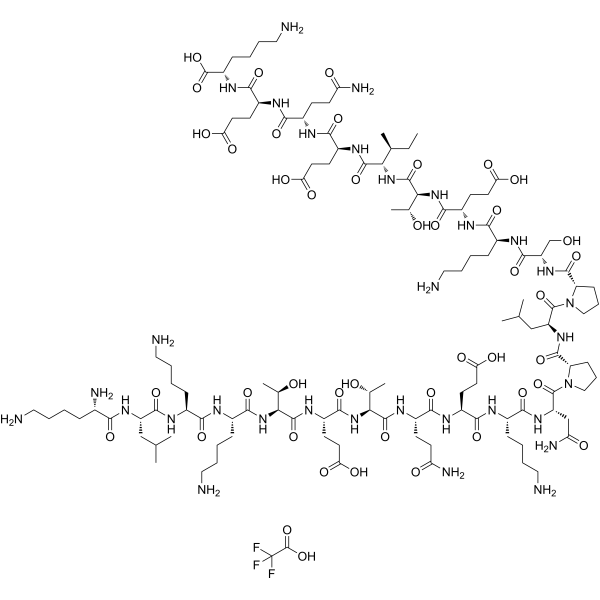
-
- HY-15662
-
|
Tulathromycin; CP 472295
|
Antibiotic
Bacterial
|
Infection
|
|
Tulathromycin A (Tulathromycin), a macrolide antibiotic, inhibits protein synthesis (IC50=0.26 µM) by targeting bacterial ribosome. Tulathromycin A is used for the research of respiratory disease in cattle and swine. Immunomodulatory effects .
|
-

-
- HY-123012
-
|
LY-488756
|
Adrenergic Receptor
|
Others
|
|
Lubabegron is a potent modulator of β-adrenergic receptor (β -AR). Lubabegron demonstrates antagonistic behavior at the β1 and β 2 receptor subtypes and agonistic behavior at the β 3 receptor subtype in cattle. Lubabegron reduces NH3 gas emissions from an animal or its waste .
|
-
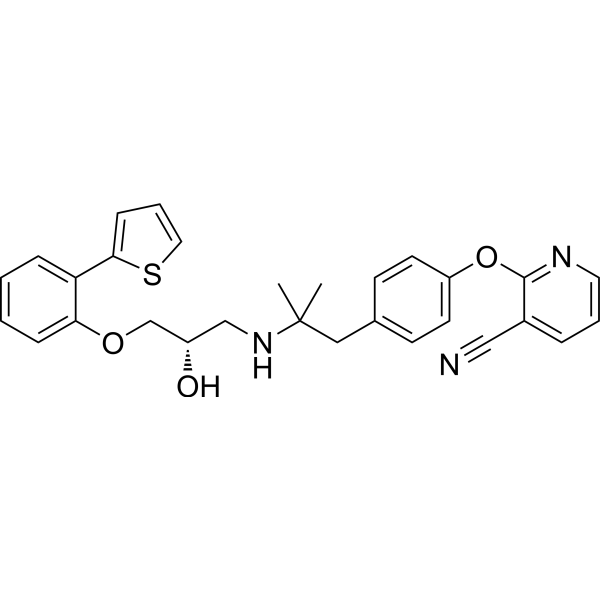
-
- HY-136440S
-
|
Metronidazole-OH-d4
|
Isotope-Labeled Compounds
Bacterial
Parasite
|
Infection
|
|
Hydroxymetronidazole-d4 is the deuterium labeled Hydroxymetronidazole. Hydroxymetronidazole (Metronidazole-OH) is a metabolite of Metronidazole belonging to the class of nitroimidazoles. Hydroxymetronidazole can be used for the research of certain bacterial and protozoal diseases in poultry, swine dysentery and genital trichomoniasis in cattle[1].
|
-
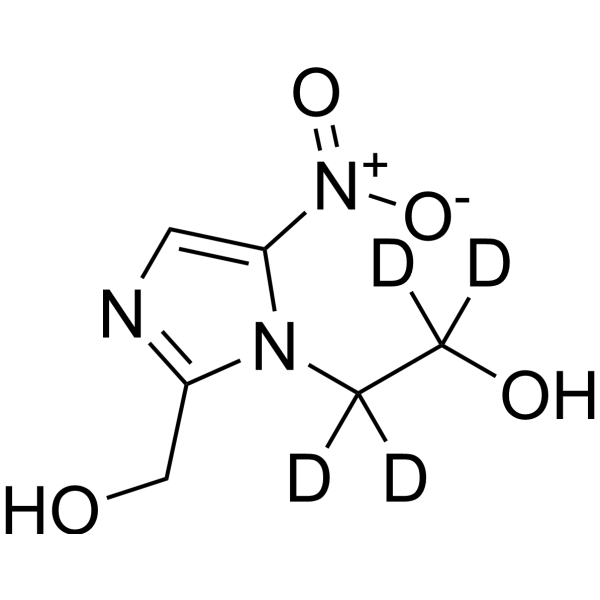
-
- HY-B1241
-
|
Dihydrostreptomycin sesquisulfate
|
Bacterial
Antibiotic
|
Infection
|
|
Dihydrostreptomycin sulfate is an aminoglycoside antibiotic, used to treat bacterial diseases in cattle, pigs and sheep.
|
-
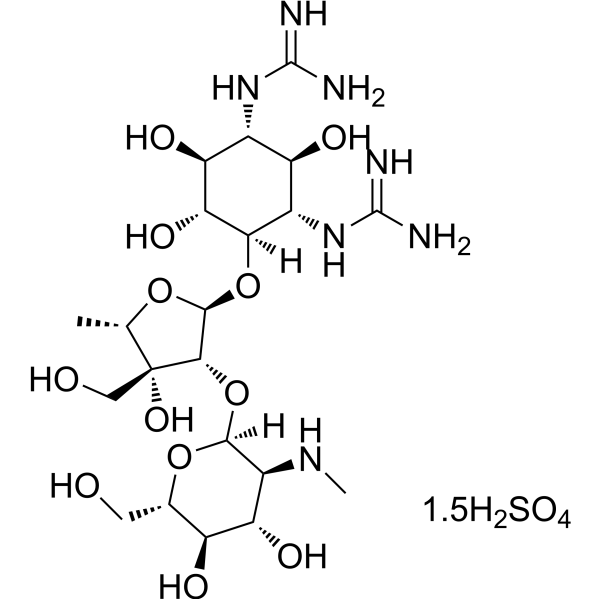
-
- HY-17597
-
|
|
Parasite
|
Infection
|
|
Febantel is an anthelmintic for veterinary use on dogs, cats, cattle, sheep, goats, pig and poultry against roundworms and tapeworms.
|
-
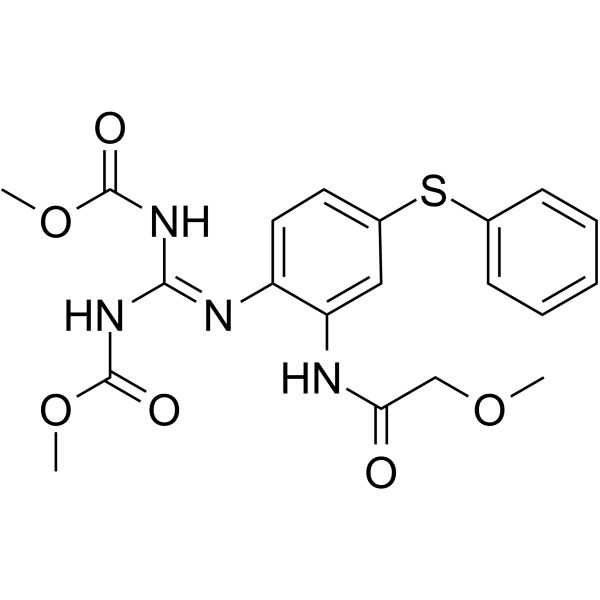
-
- HY-U00131
-
|
N 3517; Sulfabromomethazine
|
Bacterial
|
Infection
|
|
Sulfabrom (N 3517; Sulfabromomethazine) is a long-acting Sulfonamide that is used for the treatment of coccidiosis and various bacterial infections in the poultry, swine and cattle.
|
-
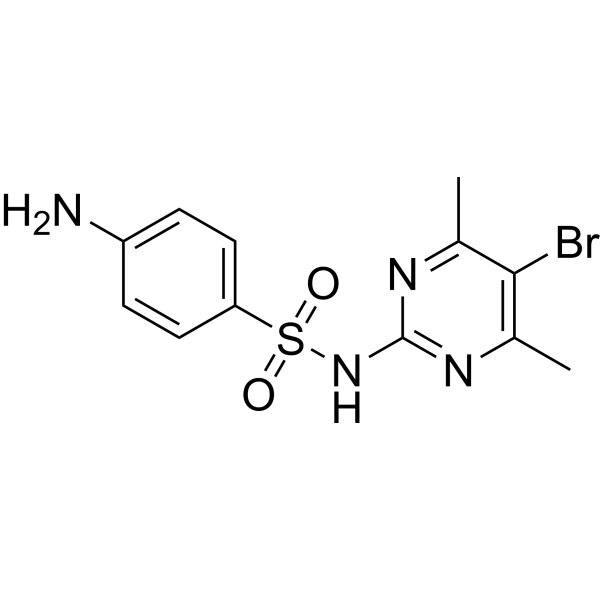
-
- HY-121477
-
|
|
Parasite
|
Infection
|
|
Resorantel is an anthelmintic . Resorantel is used in the research of paramphistomiasis in cattle and sheep and has also been used for the research of G. aegypticus .
|
-
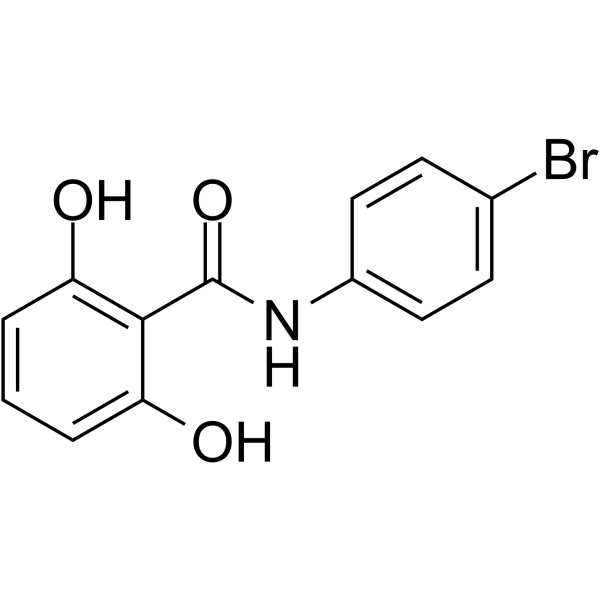
-
- HY-B0887B
-
|
(-)-trans-NRDC-143; (1S)-trans-Permethrin
|
Others
|
Others
|
|
(-)-trans-Permethrin ((-)-trans-NRDC-143) is a pyrethroid that can provide a satisfactory level of protection from black flies for cattle .
|
-

-
- HY-W011527
-
|
|
Endogenous Metabolite
|
Others
|
|
Xanthosine is a nucleoside derived from xanthine and ribose. Xanthosine can increase mammary stem cell population and milk production in cattle and goats .
|
-
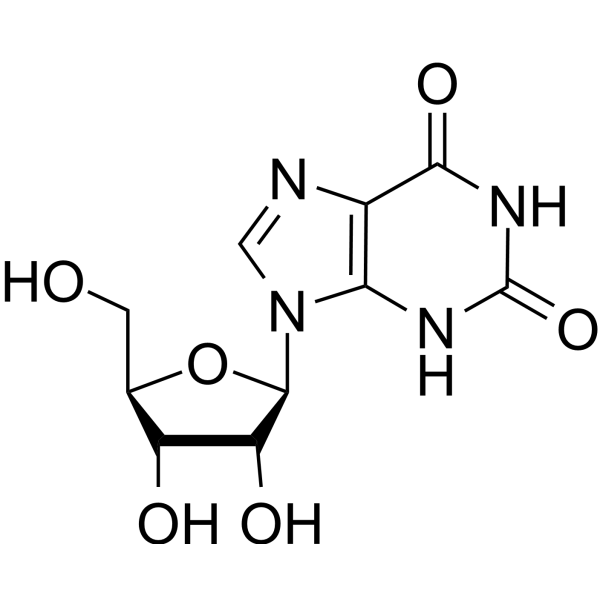
-
- HY-B0519AS
-
|
|
Isotope-Labeled Compounds
Bacterial
Antibiotic
|
Infection
|
|
Tylosin-d3 is the deuterium labeled Tylosin. Tylosin (Tylosin A) is a macrolide antibiotic found naturally as a fermentation product of Streptomyces fradiae. Tylosin exerts potent antimicrobial activity against Gram-positive bacteria. Tylosin is widely used as a feed additive for promoting animal growth. Tylosin is used for veterinary purposes against bacterial dysentery and respiratory diseases in poultry, pigs and cattle[1][2][3].
|
-

-
- HY-121405
-
|
Antibiotic K16
|
Antibiotic
Parasite
|
Infection
|
|
Malonomicin (Antibiotic K16) is an antibiotic with anti-protozoa and anti-trypanosome activities. Malonomicin also shows anti-trypanosome activity in vivo .
|
-
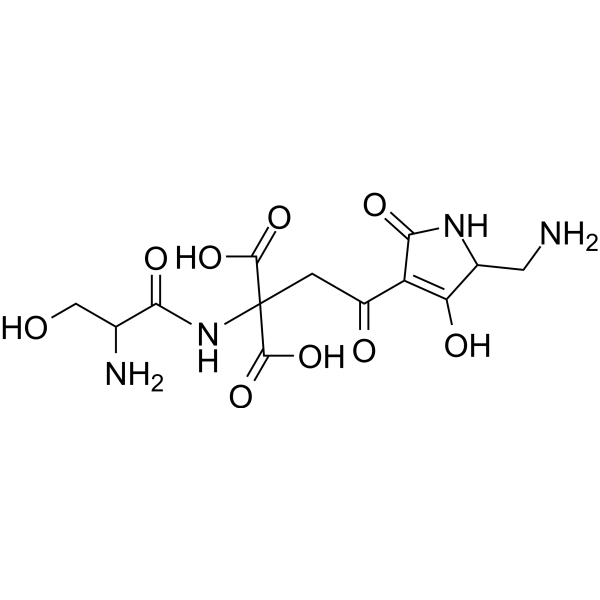
-
- HY-125611
-
|
|
GnRH Receptor
|
Endocrinology
|
|
Fluorogestone acetate is a progesterone compound. Fluorogestone acetate inhibits ovulation and synchronizes the estrous cycle in cattle by inhibiting the release of luteinizing hormone (LH) from the pituitary gland .
|
-
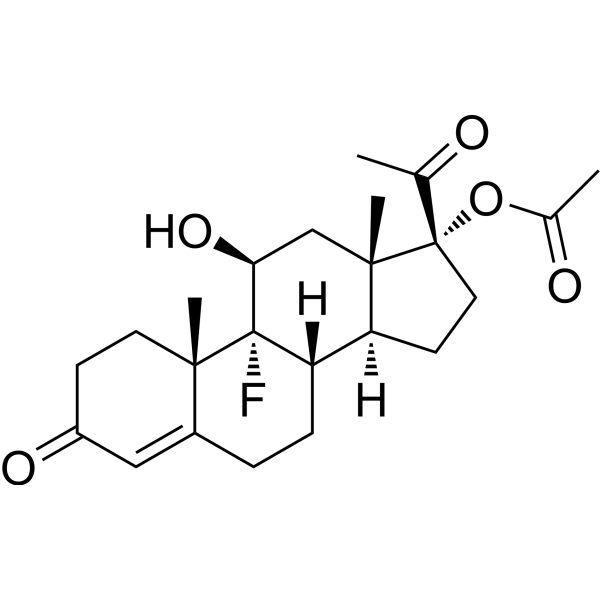
-
- HY-W013803
-
|
|
Endogenous Metabolite
|
Metabolic Disease
|
|
Xanthosine dihydrate is a nucleoside derived from xanthine and ribose. Xanthosine dihydrate can increase mammary stem cell population and milk production in cattle and goats .
|
-
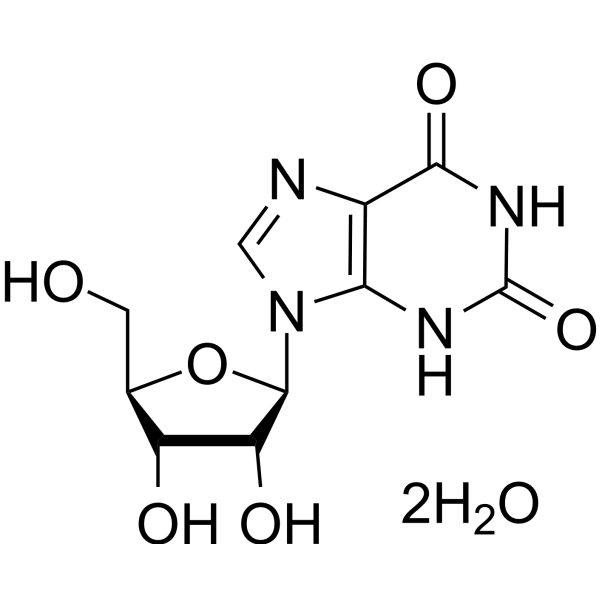
-
- HY-136440
-
|
Metronidazole-OH
|
Bacterial
Parasite
|
Infection
|
|
Hydroxymetronidazole (Metronidazole-OH) is a metabolite of Metronidazole belonging to the class of nitroimidazoles. Hydroxymetronidazole can be used for the research of certain bacterial and protozoal diseases in poultry, swine dysentery and genital trichomoniasis in cattle .
|
-
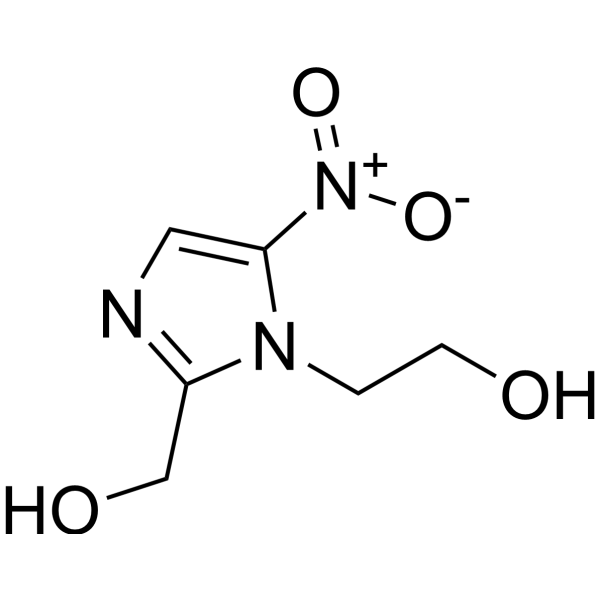
-
- HY-106662
-
|
Chloroquinoxaline; NSC-339004
|
Molecular Glues
Topoisomerase
Parasite
|
Infection
Cancer
|
|
Chloroquinoxaline sulfonamide (Chloroquinoxaline), a structural analogue of sulfaquinoxaline, is a topoisomerase II alpha/beta poison. Chloroquinoxaline sulfonamide is used to control coccidiosis in poultry, rabbit, sheep, and cattle . Antitumor activity .
|
-
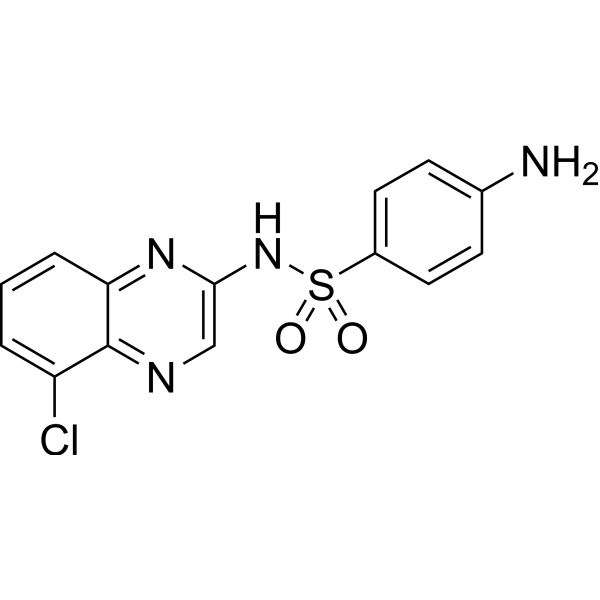
-
- HY-108387
-
|
|
Parasite
|
Infection
|
|
Morantel citrate is a veterinary anthelmintic agent that inhibits parasitic infections in cattle, sheep and goats. Morantel citrate paralyzes the nervous system of the parasite, helping the animal expel the dead parasite from the body .
|
-
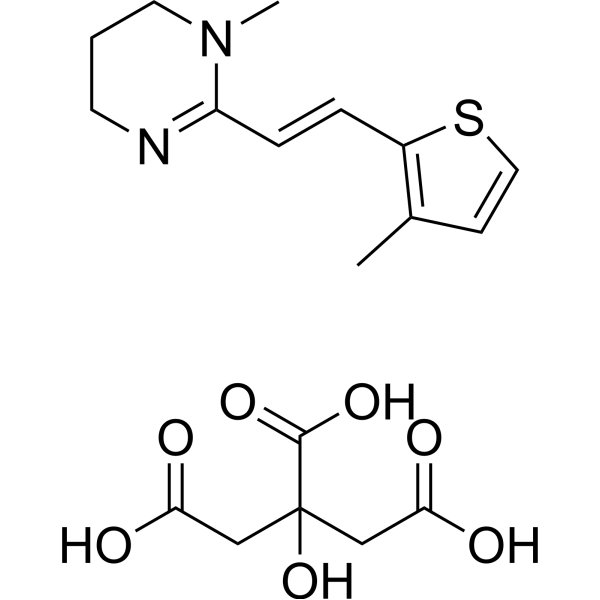
-
- HY-12643S
-
|
MK-397-d3
|
Isotope-Labeled Compounds
|
Infection
|
|
Eprinomectin-d3 (MK-397-d3) is the deuterium-labeled Eprinomectin (HY-12643) . Eprinomectin is an avermectin for use as a topical endectocide for cattle .
|
-

-
- HY-120955
-
|
|
Others
|
Others
|
|
Cloprostol, a synthetic derivative of prostaglandin F2α, is used as an ossified in veterinary medicine and the research of reproductive disorders in cattle, pigs and horses. (+)-5-trans Cloprostenol is a secondary impurity produced during the synthesis of (+) -cloprostenol .
|
-
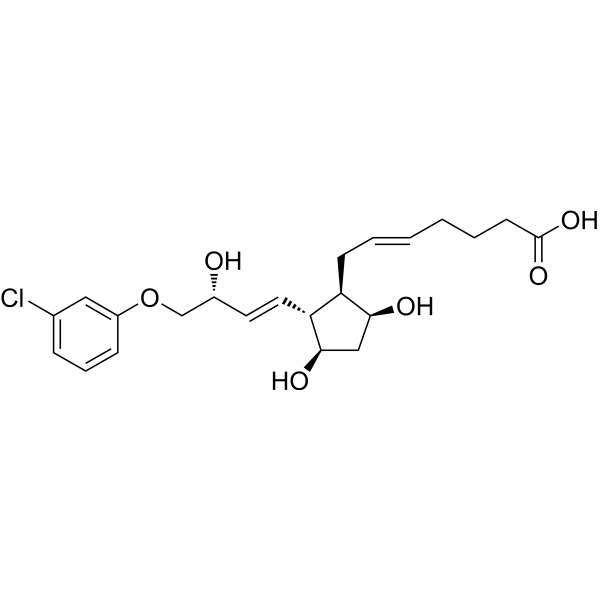
-
- HY-B1946
-
|
|
|
|
|
Dimethoate is an effective systemic insecticide for use on plants, has shown promise as a chemotherapeutic agent for control of cattle grubs and certain other insect pests of farm animals, and has high contact toxicity to house-flies and many other insects .
|
-
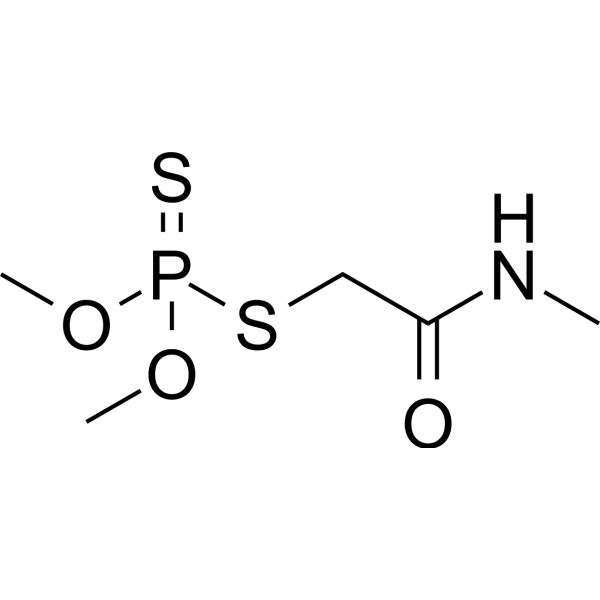
-
- HY-103447
-
|
Mycotoxin F2; Toxin F2
|
Estrogen Receptor/ERR
|
Others
|
|
Zearalenone is a mycotoxin produced mainly by fungi belonging to the genus Fusarium in foods and feeds. Possess oestrogenic activity in pigs, cattle and sheep, with low acute toxicity. Causes precocious development of mammae and other estrogenic effects in young gilts .
|
-
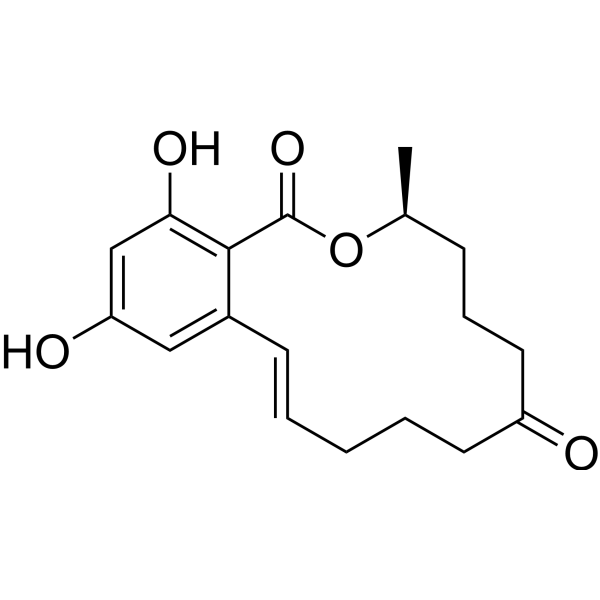
-
- HY-B1662
-
|
|
Estrogen Receptor/ERR
|
Endocrinology
|
|
Hexestrol is a nonsteroidal synthetic estrogen, with a Ki of 0.06 and 0.06 nM for estrogen receptor alpha (ERα) and ERβ. Hexestrol can be used for the research of the diseases caused by estrogen deficiencym, and it also can increase the weight of cattle .
|
-
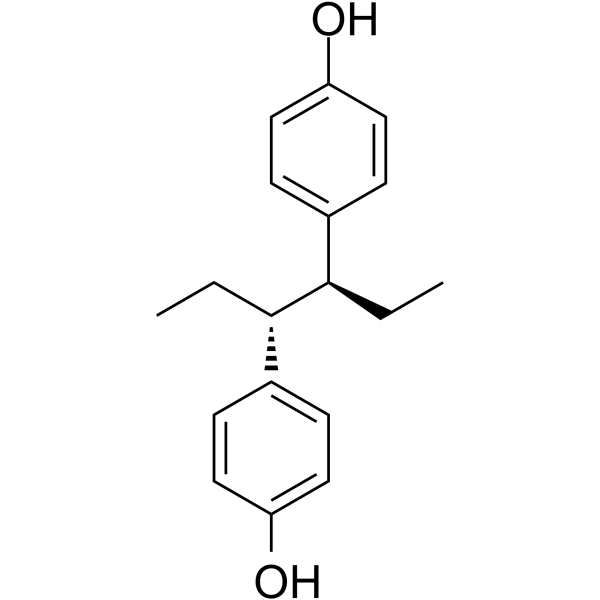
-
- HY-U00131S
-
|
N 3517-d4; Sulfabromomethazine-d4
|
Isotope-Labeled Compounds
|
Others
|
|
Sulfabrom-d4 (N 3517-d4) is is the deuterium labeled Sulfabrom (HY-U00131). Sulfabrom is a long-acting Sulfonamide that is used for the treatment of coccidiosis and various bacterial infections in the poultry, swine and cattle .
|
-
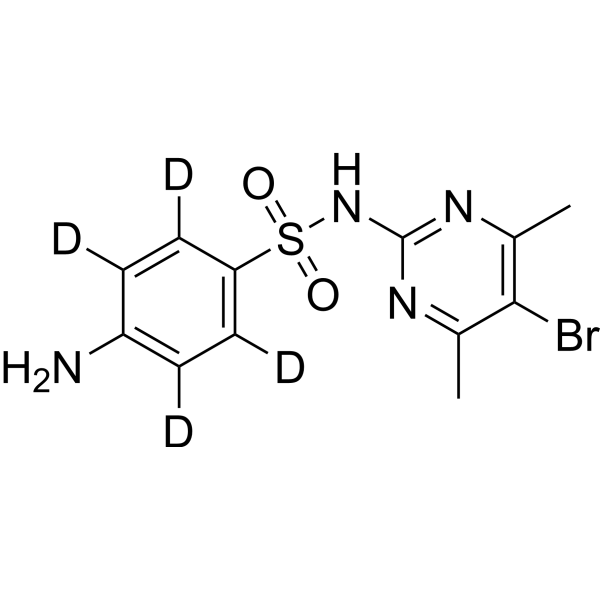
-
- HY-143322
-
|
|
Parasite
|
Infection
|
|
CRK12-IN-2 (compound 2) is an inhibitor of CRK12. CRK12-IN-2 shows potency against Trypanosoma congolense and Trypanosoma vivax with EC50 values of 3.2 and 0.08 nM. CRK12-IN-2 can be used for the research of animal trypanosomiasis .
|
-
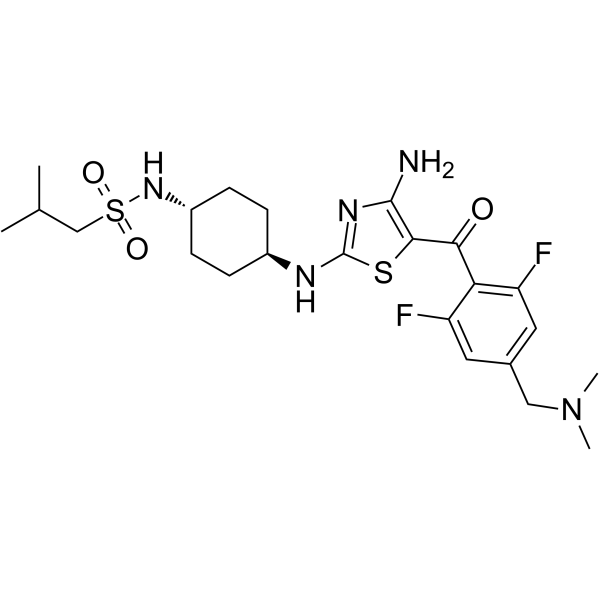
-
- HY-B1946S
-
|
|
Isotope-Labeled Compounds
|
Others
|
|
Dimethoate-d6 is the deuterium labeled Dimethoate. Dimethoate is an effective systemic insecticide for use on plants, has shown promise as a chemotherapeutic agent for control of cattle grubs and certain other insect pests of farm animals, and has high contact toxicity to house-flies and many other insects[1].
|
-

-
- HY-W011117
-
|
|
Bacterial
DNA/RNA Synthesis
Antibiotic
|
Infection
|
|
Danofloxacin is a third generation fluoroquinolone and orally active antimicrobial agent. Danofloxacin shows a broad spectrum of activity against most Gram-negative and Gram-positive bacteria, mycoplasma and chlamydia species, and plays an antimicrobial role by inhibition of bacterial DNA-gyrase. Danofloxacinh has the potential for respiratory diseases in cattle, swine, and chickens treatment .
|
-
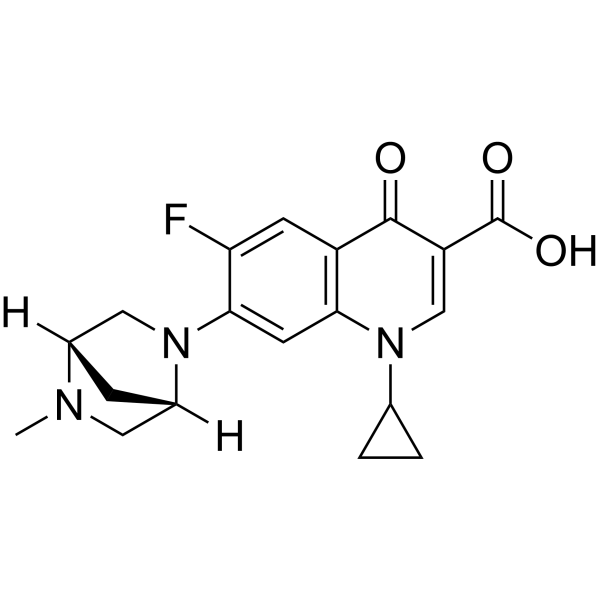
-
- HY-103447S
-
|
|
Isotope-Labeled Compounds
|
Others
|
|
(Rac)-Zearalenone-d6 is the deuterium labled Zearalenone (HY-103447). Zearalenone is a mycotoxin produced mainly by fungi belonging to the genus Fusarium in foods and feeds. Possess oestrogenic activity in pigs, cattle and sheep, with low acute toxicity. Causes precocious development of mammae and other estrogenic effects in young gilts .
|
-
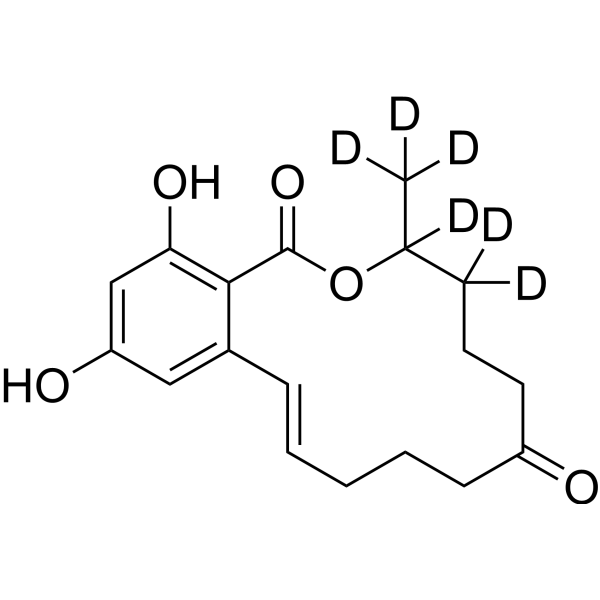
-
- HY-103447R
-
|
Mycotoxin F2(Standard); Toxin F2 (Standard)
|
Estrogen Receptor/ERR
|
Others
|
|
Zearalenone (Standard) is the analytical standard of Zearalenone. This product is intended for research and analytical applications. Zearalenone is a mycotoxin produced mainly by fungi belonging to the genus Fusarium in foods and feeds. Possess oestrogenic activity in pigs, cattle and sheep, with low acute toxicity. Causes precocious development of mammae and other estrogenic effects in young gilts .
|
-

-
- HY-B0519A
-
Tylosin
1 Publications Verification
Tylosin A
|
Bacterial
Antibiotic
|
Infection
|
|
Tylosin (Tylosin A) is a macrolide antibiotic found naturally as a fermentation product of Streptomyces fradiae. Tylosin exerts potent antimicrobial activity against Gram-positive bacteria. Tylosin is widely used as a feed additive for promoting animal growth. Tylosin is used for veterinary purposes against bacterial dysentery and respiratory diseases in poultry, pigs and cattle .
|
-
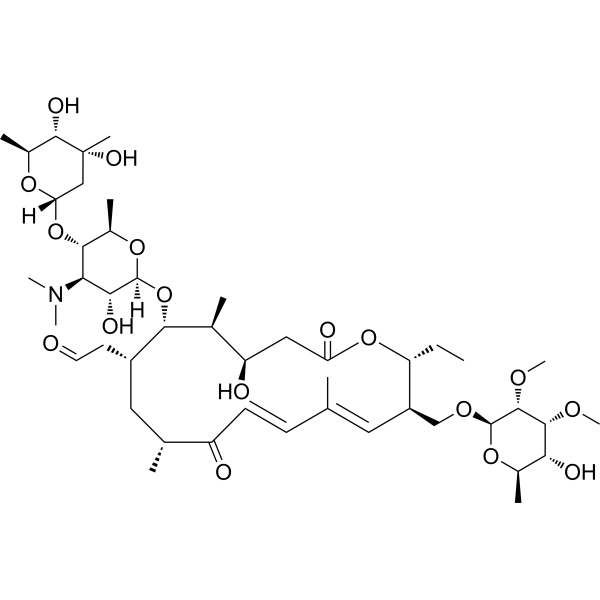
-
- HY-B0519B
-
|
|
Bacterial
Antibiotic
|
Infection
|
|
Tylosin phosphate is a macrolide antibiotic found naturally as a fermentation product of Streptomyces fradiae. Tylosin tartrate exerts potent antimicrobial activity against Gram-positive bacteria. Tylosin phosphate is widely used as a feed additive for promoting animal growth. Tylosin phosphate is used for veterinary purposes against bacterial dysentery and respiratory diseases in poultry, pigs and cattle .
|
-
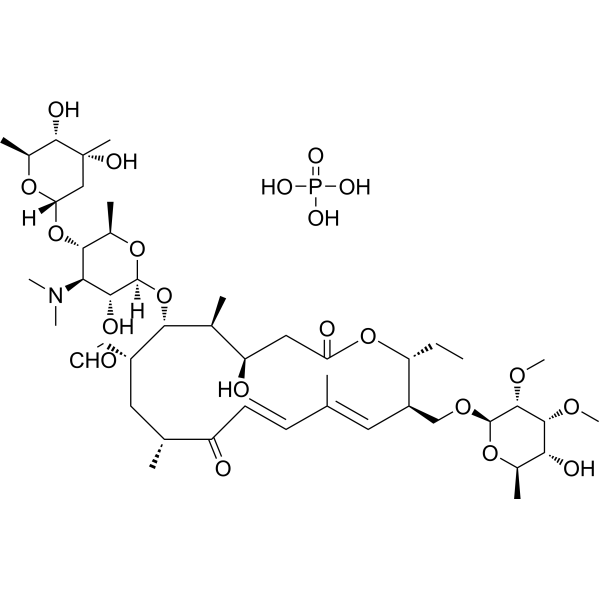
-
- HY-17594
-
|
|
Oxidative Phosphorylation
Parasite
Bacterial
Fungal
|
Infection
|
|
Oxyclozanide is an orally active salicylanilide anthelmintic agent that mainly acts by uncoupling oxidative phosphorylation in flukes. Oxyclozanide shows good anti-adenovirus, anti-biofilm, antifungal, and antibacterial activity .
|
-
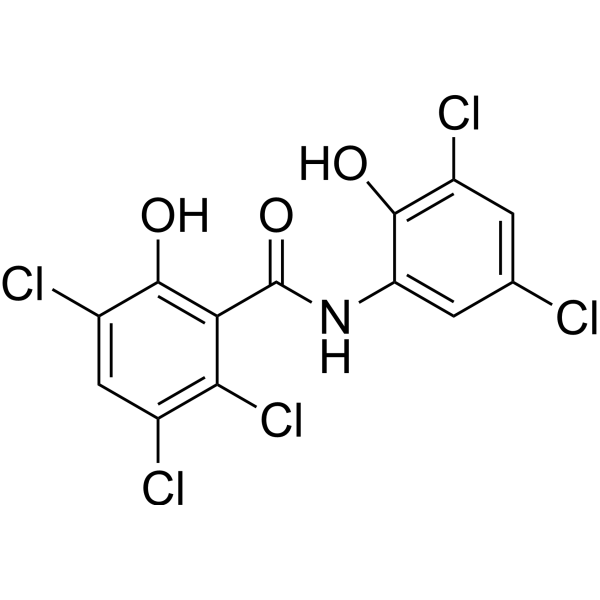
-
- HY-145812
-
|
|
Parasite
|
Infection
|
|
CRK12-IN-1 is a potent CRK12 inhibitor. CRK12-IN-1 is extremely potent against T.b. brucei and rapidly cytocidal, as well as equally potent against T. congolense and T. vivax (EC50 of 1.3 and 18 nM, respectively) .
|
-

-
- HY-B0519
-
|
|
Bacterial
Antibiotic
|
Infection
|
|
Tylosin tartrate is a macrolide antibiotic found naturally as a fermentation product of Streptomyces fradiae. Tylosin tartrate exerts potent antimicrobial activity against Gram-positive bacteria. Tylosin tartrate is widely used as a feed additive for promoting animal growth. Tylosin tartrate is used for veterinary purposes against bacterial dysentery and respiratory diseases in poultry, pigs and cattle .
|
-
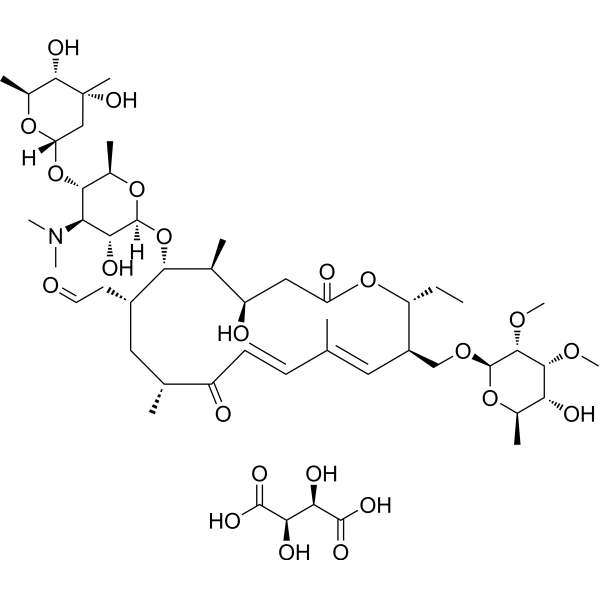
-
- HY-103447S1
-
|
Mycotoxin F2-13C18; Toxin F2-13C18
|
Isotope-Labeled Compounds
|
Others
|
|
Zearalenone- 13C18 (Mycotoxin F2- 13C18; Toxin F2- 13C18) is the 13C labeled Zearalenone (HY-103447) . Zearalenone is a mycotoxin produced mainly by fungi belonging to the genus Fusarium in foods and feeds. Possess oestrogenic activity in pigs, cattle and sheep, with low acute toxicity. Causes precocious development of mammae and other estrogenic effects in young gilts .
|
-

-
- HY-17598
-
|
|
Oxidative Phosphorylation
Parasite
p38 MAPK
Raf
Apoptosis
|
Infection
Cancer
|
|
Rafoxanide is a poent, orally active halogenated salicylaniline agent with antiparasitic activity. Rafoxanide interferes with energy metabolism in trematodes by uncoupling oxidative phosphorylation. Rafoxanide is also found to be a potent inhibitor of the BRAF V600E mutant protein, which is important in colorectal cancer. Rafoxanide can be used for the control of infestation with Hemonchus species or Fasciola species in sheep and cattle as well as Oestrus ovis in sheep. Rafoxanide can also be used for cancer research .
|
-
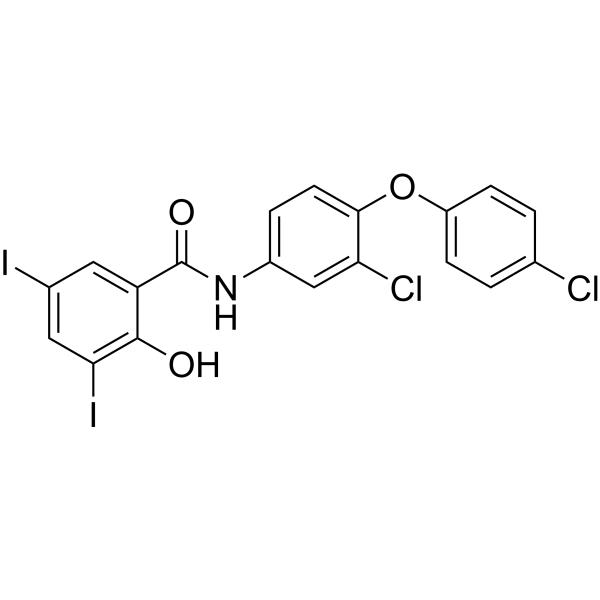
-
- HY-17598R
-
|
|
Oxidative Phosphorylation
Parasite
p38 MAPK
Raf
Apoptosis
|
Infection
Cancer
|
|
Rafoxanide (Standard) is the analytical standard of Rafoxanide. This product is intended for research and analytical applications. Rafoxanide is a poent, orally active halogenated salicylaniline agent with antiparasitic activity. Rafoxanide interferes with energy metabolism in trematodes by uncoupling oxidative phosphorylation. Rafoxanide is also found to be a potent inhibitor of the BRAF V600E mutant protein, which is important in colorectal cancer. Rafoxanide can be used for the control of infestation with Hemonchus species or Fasciola species in sheep and cattle as well as Oestrus ovis in sheep. Rafoxanide can also be used for cancer research .
|
-
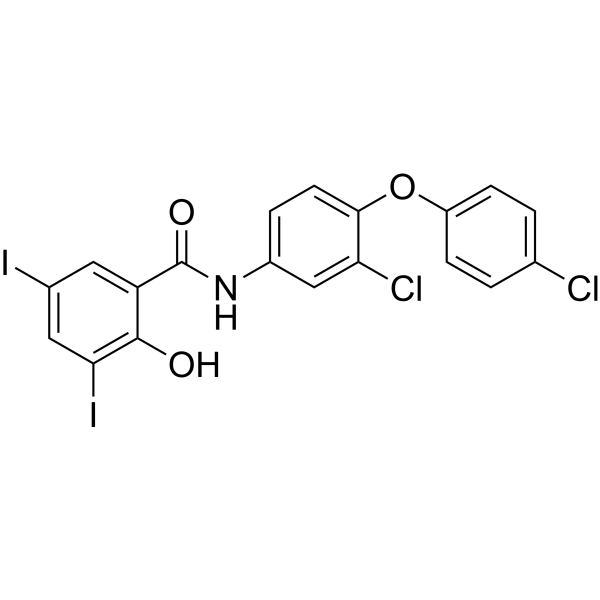
| Cat. No. |
Product Name |
Target |
Research Area |
| Cat. No. |
Product Name |
Category |
Target |
Chemical Structure |
| Cat. No. |
Product Name |
Chemical Structure |
-
- HY-U00131S
-
|
|
|
Sulfabrom-d4 (N 3517-d4) is is the deuterium labeled Sulfabrom (HY-U00131). Sulfabrom is a long-acting Sulfonamide that is used for the treatment of coccidiosis and various bacterial infections in the poultry, swine and cattle .
|
-

-
- HY-B1946S
-
|
|
|
Dimethoate-d6 is the deuterium labeled Dimethoate. Dimethoate is an effective systemic insecticide for use on plants, has shown promise as a chemotherapeutic agent for control of cattle grubs and certain other insect pests of farm animals, and has high contact toxicity to house-flies and many other insects[1].
|
-

-
- HY-136440S
-
|
|
|
Hydroxymetronidazole-d4 is the deuterium labeled Hydroxymetronidazole. Hydroxymetronidazole (Metronidazole-OH) is a metabolite of Metronidazole belonging to the class of nitroimidazoles. Hydroxymetronidazole can be used for the research of certain bacterial and protozoal diseases in poultry, swine dysentery and genital trichomoniasis in cattle[1].
|
-

-
- HY-B0519AS
-
|
|
|
Tylosin-d3 is the deuterium labeled Tylosin. Tylosin (Tylosin A) is a macrolide antibiotic found naturally as a fermentation product of Streptomyces fradiae. Tylosin exerts potent antimicrobial activity against Gram-positive bacteria. Tylosin is widely used as a feed additive for promoting animal growth. Tylosin is used for veterinary purposes against bacterial dysentery and respiratory diseases in poultry, pigs and cattle[1][2][3].
|
-

-
- HY-12643S
-
|
|
|
Eprinomectin-d3 (MK-397-d3) is the deuterium-labeled Eprinomectin (HY-12643) . Eprinomectin is an avermectin for use as a topical endectocide for cattle .
|
-

-
- HY-103447S
-
|
|
|
(Rac)-Zearalenone-d6 is the deuterium labled Zearalenone (HY-103447). Zearalenone is a mycotoxin produced mainly by fungi belonging to the genus Fusarium in foods and feeds. Possess oestrogenic activity in pigs, cattle and sheep, with low acute toxicity. Causes precocious development of mammae and other estrogenic effects in young gilts .
|
-

-
- HY-103447S1
-
|
|
|
Zearalenone- 13C18 (Mycotoxin F2- 13C18; Toxin F2- 13C18) is the 13C labeled Zearalenone (HY-103447) . Zearalenone is a mycotoxin produced mainly by fungi belonging to the genus Fusarium in foods and feeds. Possess oestrogenic activity in pigs, cattle and sheep, with low acute toxicity. Causes precocious development of mammae and other estrogenic effects in young gilts .
|
-

Your information is safe with us. * Required Fields.
Inquiry Information
- Product Name:
- Cat. No.:
- Quantity:
- MCE Japan Authorized Agent:
















































